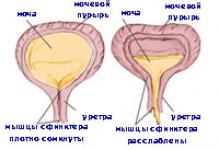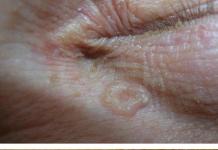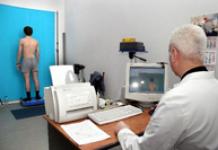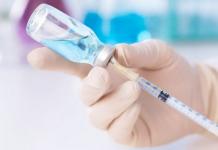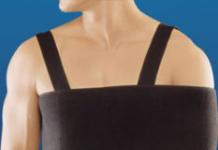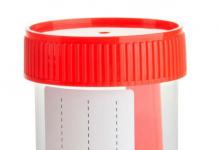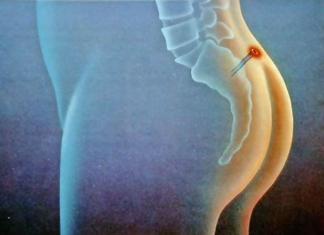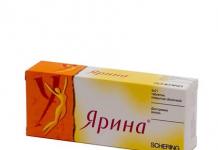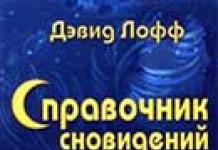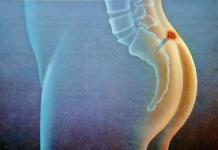Arterial hypertension is a stable increase in blood pressure, which varies within 145/95 mmHg. Art., but can rise higher. During treatment for this disease, you should be extremely careful with the choice of drugs. As treatment practice has already shown, optimal and effective method can be considered sartans when arterial hypertension. These drugs, ARBs (angiotensin receptor blockers), have been clearly demonstrating their quality, effectiveness and effect on the body for many years.
Mechanism of action of ARBs
The main task of angiotensin receptor blockers is to inhibit the activity of the RAAS, thereby this process has a positive effect on the functioning of many human organs. Sartans are considered the best drugs on the list of medicinal groups for high blood pressure. It should be noted that the pricing policy of these drugs is significantly different from branded drugs - they are more affordable. According to statistics on taking sartans, 70% of patients undergo courses of therapy for up to several years, without reducing the level of performance of a particular organ.
These facts can only indicate that angiotensin receptor blockers have a minimal list side effects, and some don’t have them at all.
As for confirming or refuting the fact that sartans cause cancer, this type of controversy is still under careful control.
Groups
Based on their chemical properties, ARBs can be divided into 4 subtypes:
- Biphenyls formed from tetrazole - Losartan, Irbesartan, Candesartan.
- Non-biphenols formed from tetrazole - Telmisartan.
- Non-biphenol non-tetrazoles – Eprosartan.
- Non-cyclic compounds – Valsartan.

This kind of drugs have been introduced into the treatment of arterial hypertension since the 1990s, and at the moment we can note a rather considerable list of drugs:
- Losartan: Bloktran, Vasotens, Zisacar, Carzartan, Cozaar, Lozap, Losarel, Losartan, Lorista, Losakor, Lotor, Presartan, Renicard,
- Eprosartan: Teveten,
- Valsartan: Valaar, Valz, Valsafors, Valsacor, Diovan, Nortivan, Tantordio, Tareg,
- Irbesartan: Aprovel, Ibertan, Irsar, Firmasta,
- Candesartan: Angiakand, Atakand, Giposart, Kandecor, Kandesar, Ordiss,
- Telmisartan: Micardis, Praytor,
- Olmesartan: Cardosal, Olimestra,
- Azilsartan: Edarbi.

In addition to the above, you can also find combination components from the classification of these drugs: with diuretics, with calcium antagonists, with aliskiren renin antagonists.
Scope of application of ARB
Angiotensin II receptor blockers provide the highest effectiveness for diseases such as:
- arterial hypertension,
- insufficient performance of the heart muscle,
- Problems with the functioning of the cerebral blood system,
- Lack of glucose in the body,
- Nephropathy,
- Atherosclerosis,
- Sexual disorders.

Any of the drugs with antihypertensive effects is allowed to be prescribed, even in combination with other dosage forms. Type A - II drugs are often prescribed when they are more preferable. In this case they can be considered better ACE inhibitors at high blood pressure, sudden changes in blood pressure. On inhibitors it often happens allergic reaction, which is almost impossible when using sartans, and their positive aspects can be highlighted in terms of taking them during the development of type 2 diabetes mellitus, as well as nephropathy, which cannot be said about ACEs.
Contraindications include the following types of population: pregnant women, lactation period, childhood from birth to 14 years. Take with caution in cases of kidney or liver dysfunction.
Impact
ARBs are, first and foremost, effective blood pressure medications. But the result of therapy with these medicines can be different, depending on the degree of development of the disease. In cases where blood pressure is consistently elevated, A-II antagonists can show good effectiveness.
Modern drugs - sartans are considered one of the best in terms of their effect on organs such as kidneys, heart, liver, brain, etc.

The main positive aspects of taking sartans can be considered:
- No increase in heart rate was observed when taking this type of medication.
- With constant medication use, pressure surges do not occur,
- With insufficient kidney function, under the influence of these drugs, protein decreases,
- The level of cholesterol, glucose, acid in urine decreases,
- Positively influence lipid processes,
- Improvement of sexual ability,
- No dry cough was noticed while taking sartans.
It is important to know! During an acute stroke, it is not recommended to use drugs to lower blood pressure for 5-8 days. The only exception may be excessively high blood pressure readings.
You should also know that sartans have a beneficial effect on muscle tissue, and are especially good for those patients who have myodystrophy.
It is important to know! If bilateral narrowing of the renal artery occurs, it is strictly forbidden to take Ara therapy drugs - it may develop renal failure.
Which one is better to buy?
It is simply unrealistic to provide information about the best ARBs, since there are quite a large number of them in their number and variety. effective drugs, but each of them has its own functions. According to clinical studies, it was revealed which sartans can help with a specific disease:
| Disease | Required drug |
| Stroke | Losartan, Candesartan (for primary stroke); Eprosartan (for secondary manifestation). |
| Diabetes | Losartan, Candesartan (preventive measures) |
| Candesartan plus felodipine (preventive measures for secondary manifestations) | |
| Valsartan (prevention of nephropathy) | |
| Work of the heart | Losartan - affects the functioning of the left ventricle of the heart. |
| Candesartan – effective remedy with chronic insufficient heart function. | |
| Valsartan (prevention of complications in angina pectoris). | |
| Metabolism | Losartan (stable reduction of acid in urine) |
| Preventive measures for arterial hypertension | Candesartan |
| Hypertension in the workplace | Eprosartan |
| Nephropathy | Many medications can be used to reduce albuminuria. |
It is important to know! During therapy, it is strictly forbidden to prescribe two or more types of sartans at the same time!

Advantages over other drugs
During the treatment of arterial hypertension, you should know the preferences of the drugs that cardiologists will prescribe to you:
- These types of drugs can be used for more than several years,
- Side effects in this case are either minimal or absent,
- When treating arterial hypertension, tablets should be taken up to two times every 12 hours,
- The decrease in blood pressure does not occur abruptly, within 20-24 hours,
- If the pressure is already stable (120/80), when taking sartans, the pressure will not decrease further,
- Patients do not get used to this type of medicine,
- If you do not use drugs of this group, there will be no sudden surges in blood pressure,
- Modern types of drugs have high efficiency and quality of administration during therapy and prevention.
Warning! After taking blockers for the first time, do not expect quick results. They are not capable of quickly reducing blood pressure, but are able to bring it back to normal within 10-15 days, and a stronger effect - after 20-25 days of use.

The medications should be taken as follows (example):
| A drug | Peak exposure (hour) | T ½ | Period of taking the drug | Dosage per 24 hours | Bioavailability | Volume of distribution throughout the body |
| Losartan | from an hour to 4 hours | From 5 to 9 | Up to twice every 24 hours | 55-110 | 33 | 34 |
| Valsartan | Two to four | From 5 to 9 | Once every 24 hours | 80-320 | 25 | 17 |
| Irbesartan | From an hour to two | 11-16 | Once every 24 hours | 145-350 | 60-80 | 52-55 |
| Cardesartan | Three to four | 2-10 | Up to twice every 24 hours | 8-32 | 15 | 9 |
| Eprosartan | From an hour to two | From 5 to 9 | Up to twice every 24 hours | 450-650 | 13 | 306 |
| Telmisartan | From 30 minutes to an hour | At least 20 | Once every 24 hours | From 40 and more | 42-59 | 490 |

Sartans, or angiotensin II receptor blockers (ARBs), emerged as a result of in-depth study of the pathogenesis. This is a promising group of drugs that already occupy a strong position in cardiology. We will talk about what these drugs are in this article.
When decreasing blood pressure and a lack of oxygen (hypoxia), a special substance is formed in the kidneys - renin. Under its influence, inactive angiotensinogen is converted into angiotensin I. The latter, under the action of angiotensin-converting enzyme, is transformed into angiotensin II. A widely used group of drugs, angiotensin-converting enzyme inhibitors, acts specifically on this reaction.
Angiotensin II is highly active. By binding to receptors, it causes a rapid and persistent increase in blood pressure. It is clear that angiotensin II receptors are an excellent target for therapeutic intervention. ARBs, or sartans, act specifically on these receptors, preventing hypertension.
Angiotensin I is converted to angiotensin II not only under the action of angiotensin-converting enzyme, but also as a result of the action of other enzymes - chymases. Therefore, angiotensin-converting enzyme inhibitors cannot completely block vasoconstriction. ARBs are more effective drugs in this regard.
Classification
 According to their chemical structure, there are four groups of sartans:
According to their chemical structure, there are four groups of sartans:
- losartan, irbesartan and candesartan are biphenyl tetrazole derivatives;
- telmisartan is a non-biphenyl tetrazole derivative;
- eprosartan – non-biphenyl netetrazole;
- valsartan is a non-cyclic compound.
Sartans began to be used only in the 90s of the twentieth century. There are now quite a few trade names of essential drugs. Here is a partial list of them:
- losartan: blocktran, vasotens, zisacar, carzartan, cozaar, lozap, lozarel, losartan, lorista, lozacor, lotor, presartan, renicard;
- eprosartan: teveten;
- valsartan: valaar, valz, valsafors, valsacor, diovan, nortivan, tantordio, tareg;
- irbesartan: aprovel, ibertan, irsar, firmasta;
- candesartan: angiakand, atakand, hyposart, candecor, candesar, ordiss;
- telmisartan: micardis, prytor;
- olmesartan: cardosal, olimestra;
- azilsartan: edarbi.
Ready-made combinations of sartans with calcium antagonists, as well as with the renin secretion antagonist aliskiren, are also available.
Indications for use

Additional clinical effects

ARBs improve lipid metabolism by reducing total cholesterol, low-density lipoprotein cholesterol, and triglycerides.
These drugs reduce the level of uric acid in the blood, which is important during simultaneous long-term therapy with diuretics.
The effect of some sartans in connective tissue diseases, in particular Marfan syndrome, has been proven. Their use helps strengthen the aortic wall in such patients and prevents its rupture. Losartan improves the condition of muscle tissue in Duchenne muscular dystrophy.
Side effects and contraindications
 Sartans are well tolerated. They do not have any specific side effects, as with other groups of drugs (for example, cough when using angiotensin-converting enzyme inhibitors).
Sartans are well tolerated. They do not have any specific side effects, as with other groups of drugs (for example, cough when using angiotensin-converting enzyme inhibitors).
ARBs, like any medicine, can cause an allergic reaction.
These drugs sometimes cause headaches, dizziness, and insomnia. In rare cases, their use is accompanied by an increase in body temperature and the development of signs of respiratory tract infection (cough, sore throat, runny nose).
They can cause nausea, vomiting or abdominal pain, as well as constipation. Sometimes pain in joints and muscles appears after taking drugs of this group.
There are also other side effects (cardiovascular, genitourinary system, skin), but their frequency is very low.
Sartans are contraindicated in childhood, during pregnancy and lactation. They should be used with caution in liver disease, as well as in renal artery stenosis and severe renal failure. 
Article update 01/30/2019
Arterial hypertension(AG) in Russian Federation(RF) remains one of the most significant medical and social problems. This is due to the widespread prevalence of this disease (about 40% of the adult population of the Russian Federation has increased level blood pressure), and also with the fact that hypertension is the most important risk factor for major cardiovascular diseases- myocardial infarction and cerebral stroke.
Constant persistent increase in blood pressure (BP) up to 140/90 mm. rt. Art. and higher- a sign of Arterial hypertension ( hypertension).
Risk factors contributing to the manifestation of arterial hypertension include:
- Age (men over 55, women over 65)
- Smoking
- sedentary lifestyle,
- Obesity (waist circumference more than 94 cm for men and more than 80 cm for women)
- Familial history of early cardiovascular disease (men under 55 years of age, women under 65 years of age)
- The value of pulse blood pressure in the elderly (the difference between systolic (upper) and diastolic (lower) blood pressure). Normally it is 30-50 mmHg.
- Fasting plasma glucose 5.6-6.9 mmol/l
- Dyslipidemia: total cholesterol more than 5.0 mmol/l, low-density lipoprotein cholesterol 3.0 mmol/l or more, high-density lipoprotein cholesterol 1.0 mmol/l or less for men, and 1.2 mmol/l or less for women, triglycerides more than 1.7 mmol/l
- Stressful situations
- alcohol abuse,
- Excessive salt intake (more than 5 grams per day).
The development of hypertension is also promoted by diseases and conditions such as:
- Diabetes mellitus (fasting plasma glucose 7.0 mmol/l or more with repeated measurements, as well as postprandial plasma glucose 11.0 mmol/l or more)
- Other endocrinological diseases (pheochromocytoma, primary aldosteronism)
- Diseases of the kidneys and renal arteries
- Reception medicines and substances (glucocorticosteroids, non-steroidal anti-inflammatory drugs, hormonal contraceptives, erythropoietin, cocaine, cyclosporine).
Knowing the causes of the disease, you can prevent the development of complications. Elderly people are at risk.
According to the modern classification adopted by the World Health Organization (WHO), hypertension is divided into:
- 1st degree: Increased blood pressure 140-159/90-99 mm Hg
- 2nd degree: Increased blood pressure 160-179/100-109 mm Hg
- 3rd degree: Increase in blood pressure to 180/110 mmHg and higher.
Blood pressure readings obtained at home can be a valuable addition to monitoring the effectiveness of treatment and are important in identifying hypertension. The patient’s task is to keep a diary of self-monitoring of blood pressure, where blood pressure and pulse values are recorded when measured at least in the morning, at lunch, and in the evening. It is possible to make comments on lifestyle (getting up, eating, physical activity, stressful situations).
Blood pressure measurement technique:
- Quickly inflate the cuff to a pressure level 20 mm Hg above systolic blood pressure (SBP) when the pulse disappears
- Blood pressure is measured with an accuracy of 2 mmHg
- Reduce cuff pressure at a rate of approximately 2 mmHg per second
- The pressure level at which the 1st sound appears corresponds to SBP
- The pressure level at which sounds disappear corresponds to diastolic blood pressure (DBP)
- If the tones are very weak, you should raise your hand and perform several squeezing movements with the hand, then repeat the measurement, but do not squeeze the artery too much with the membrane of the phonendoscope
- During the initial measurement, blood pressure is recorded in both arms. In the future, the measurement is carried out on the arm on which the blood pressure is higher
- In patients with diabetes mellitus and in those receiving antihypertensive drugs, blood pressure should also be measured after 2 minutes of standing.
Patients with hypertension experience pain in the head (often in the temporal, occipital region), episodes of dizziness, rapid fatigue, bad dream, possible pain in the heart, blurred vision.
The disease is complicated by hypertensive crises (when blood pressure rises sharply to high numbers, frequent urination occurs, headache, dizziness, palpitations, feeling hot); impaired renal function - nephrosclerosis; strokes, intracerebral hemorrhage; myocardial infarction.
To prevent complications, patients with hypertension need to constantly monitor their blood pressure and take special antihypertensive drugs.
If a person is bothered by the above complaints, as well as blood pressure 1-2 times a month, this is a reason to contact a therapist or cardiologist, who will prescribe the necessary examinations and subsequently determine further treatment tactics. Only after carrying out the necessary set of examinations is it possible to talk about prescribing drug therapy.
Self-prescription of medications may result in the development of undesirable side effects, complications and can be fatal! It is prohibited to use medicines independently on the principle of “helped by friends” or resort to the recommendations of pharmacists in pharmacy chains!!! The use of antihypertensive drugs is possible only as prescribed by a doctor!
The main goal of treating patients with hypertension is to minimize the risk of developing cardiovascular complications and death from them!
1. Lifestyle change measures:
- To give up smoking
- Normalization of body weight
- Consumption of alcoholic beverages less than 30 g/day of alcohol for men and 20 g/day for women
- Increase physical activity- regular aerobic (dynamic) exercise for 30-40 minutes at least 4 times a week
- Reducing table salt consumption to 3-5 g/day
- Changing your diet with an increase in the consumption of plant foods, an increase in the diet of potassium, calcium (found in vegetables, fruits, grains) and magnesium (found in dairy products), as well as a decrease in the consumption of animal fats.
These measures are prescribed to all patients with arterial hypertension, including those receiving antihypertensive drugs. They allow you to: lower blood pressure, reduce the need for antihypertensive drugs, and have a beneficial effect on existing risk factors.
2. Drug therapy
Today we will talk about these drugs - modern means for the treatment of arterial hypertension.
Arterial hypertension - chronic illness, requiring not only constant monitoring of blood pressure, but also constant use of medications. There is no course of antihypertensive therapy; all drugs are taken indefinitely. If monotherapy is ineffective, drugs are selected from various groups, often combining several medications.
As a rule, the desire of a patient with hypertension is to purchase the strongest, but not expensive, drug. However, it is necessary to understand that this does not exist.
What medications are offered for this purpose to patients suffering from high blood pressure?
Each antihypertensive drug has its own mechanism of action, i.e. influence one or another “mechanisms” of increased blood pressure :
a) Renin-angiotensin system— the kidneys produce the substance prorenin (with a decrease in pressure), which passes into renin in the blood. Renin (a proteolytic enzyme) interacts with the blood plasma protein angiotensinogen, resulting in the formation of the inactive substance angiotensin I. Angiotensin, when interacting with angiotensin-converting enzyme (ACE), is converted into the active substance angiotensin II. This substance increases blood pressure, constricts blood vessels, increases the frequency and strength of heart contractions, and stimulates the sympathetic nervous system(which also leads to increased blood pressure), increased aldosterone production. Aldosterone promotes sodium and water retention, which also increases blood pressure. Angiotensin II is one of the most powerful vasoconstrictor substances in the body.
b) Calcium channels of the cells of our body— calcium in the body is in a bound state. When calcium enters the cell through special channels, a contractile protein, actomyosin, is formed. Under its influence, the blood vessels narrow, the heart begins to contract more strongly, the pressure rises and the heart rate increases.
c) Adrenoreceptors— in our body, in some organs, there are receptors, the irritation of which affects blood pressure. These receptors include alpha-adrenergic receptors (α1 and α2) and beta-adrenergic receptors (β1 and β2). Stimulation of α1-adrenergic receptors leads to an increase in blood pressure, α2-adrenergic receptors - to a decrease in blood pressure. α-adrenergic receptors are located in arterioles. β1-adrenergic receptors are localized in the heart, in the kidneys, their stimulation leads to an increase in heart rate, an increase in myocardial oxygen demand and an increase in blood pressure. Stimulation of β2-adrenergic receptors located in the bronchioles causes dilation of the bronchioles and relief of bronchospasm.
d) Urinary system- as a result of excess water in the body, blood pressure increases.
e) Central nervous system- stimulation of the central nervous system increases blood pressure. The brain contains vasomotor centers that regulate blood pressure levels.
So, we have looked at the main mechanisms of increasing blood pressure in the human body. It's time to move on to blood pressure lowering agents (antihypertensives), which affect these same mechanisms.
Classification of drugs for arterial hypertension
- Diuretics (diuretics)
- Blockers calcium channels
- Beta blockers
- Agents acting on the renin-angiotensin system
- Angiotensin receptor blockers (antagonists) (sartans)
- Neurotropic agents central action
- Drugs acting on the central nervous system (CNS)
- Alpha blockers
1. Diuretics (diuretics)
As a result of the removal of excess fluid from the body, blood pressure decreases. Diuretics prevent the reabsorption of sodium ions, which as a result are excreted and carry water with them. In addition to sodium ions, diuretics flush out potassium ions from the body, which are necessary for work. of cardio-vascular system. There are potassium-sparing diuretics.
Representatives:
- Hydrochlorothiazide (Hypothiazide) - 25 mg, 100 mg, included in combination preparations; Long-term use at a dosage above 12.5 mg is not recommended, due to the possible development of type 2 diabetes!
- Indapamide (Arifonretard, Ravel SR, Indapamide MV, Indap, Ionic retard, Acripamidretard) - most often the dosage is 1.5 mg.
- Triampur (a combined diuretic containing potassium-sparing triamterene and hydrochlorothiazide);
- Spironolactone (Veroshpiron, Aldactone). It has a significant side effect (in men it causes the development of gynecomastia and mastodynia).
- Eplerenone (Inspra) - often used in patients with chronic heart failure, does not cause the development of gynecomastia and mastodynia.
- Furosemide 20 mg, 40 mg. The drug is short, but fast action. Inhibits the reabsorption of sodium ions in the ascending limb of the loop of Henle, proximal and distal tubules. Increases the excretion of bicarbonates, phosphates, calcium, magnesium.
- Torsemide (Diuver) - 5 mg, 10 mg, is a loop diuretic. The main mechanism of action of the drug is due to the reversible binding of torasemide to the sodium/chlorine/potassium ion contransporter located in the apical membrane of the thick segment of the ascending limb of the loop of Henle, as a result of which the reabsorption of sodium ions is reduced or completely inhibited and the osmotic pressure of intracellular fluid and water reabsorption are reduced. Blocks myocardial aldosterone receptors, reduces fibrosis and improves myocardial diastolic function. Torasemide causes hypokalemia to a lesser extent than furosemide, but it is more active and its action is longer lasting.
Diuretics are prescribed in combination with other antihypertensive drugs. The drug indapamide is the only diuretic used independently for hypertension.
Rapid-acting diuretics (furosemide) are not advisable to use systematically for hypertension; they are taken in emergency conditions.
When using diuretics, it is important to take potassium supplements in courses of up to 1 month.
2. Calcium channel blockers
Calcium channel blockers (calcium antagonists) are a heterogeneous group of drugs that have the same mechanism of action, but differ in a number of properties, including pharmacokinetics, tissue selectivity, and effect on heart rate.
Another name for this group is calcium ion antagonists.
There are three main subgroups of AKs: dihydropyridine (the main representative is nifedipine), phenylalkylamines (the main representative is verapamil) and benzothiazepines (the main representative is diltiazem).
Recently, they have been divided into two large groups depending on their effect on heart rate. Diltiazem and verapamil are classified as so-called “rhythm-slowing” calcium antagonists (non-dihydropyridine). The other group (dihydropyridine) includes amlodipine, nifedipine and all other dihydropyridine derivatives that increase or do not change the heart rate.
Calcium channel blockers are used for arterial hypertension, coronary heart disease (contraindicated in acute forms!) and arrhythmias. For arrhythmias, not all calcium channel blockers are used, but only pulse-lowering ones.
Representatives:
Pulse reducers (non-dihydropyridine):
- Verapamil 40 mg, 80 mg (extended: Isoptin SR, Verogalid EP) - dosage 240 mg;
- Diltiazem 90 mg (Altiazem RR) - dosage 180 mg;
The following representatives (dihydropyridine derivatives) are not used for arrhythmia: Contraindicated in acute myocardial infarction and unstable angina!!!
- Nifedipine (Adalat, Cordaflex, Cordafen, Cordipin, Corinfar, Nifecard, Phenigidine) - dosage 10 mg, 20 mg; NifecardXL 30mg, 60mg.
- Amlodipine (Norvasc, Normodipin, Tenox, Cordi Cor, Es Cordi Cor, Cardilopin, Kalchek,
- Amlotop, Omelarcardio, Amlovas) - dosage 5 mg, 10 mg;
- Felodipine (Plendil, Felodip) - 2.5 mg, 5 mg, 10 mg;
- Nimodipine (Nimotop) - 30 mg;
- Lacidipine (Latsipil, Sakur) - 2 mg, 4 mg;
- Lercanidipine (Lerkamen) - 20 mg.
Side effects of dihydropyridine derivatives include edema, mainly lower limbs headache, facial flushing, increased heart rate, increased urination. If swelling persists, it is necessary to replace the drug.
Lerkamen, which is a representative of the third generation of calcium antagonists, due to its higher selectivity to slow calcium channels, causes edema to a lesser extent compared to other representatives of this group.
3. Beta blockers
There are drugs that do not selectively block receptors - non-selective action, they are contraindicated in bronchial asthma, chronic obstructive pulmonary disease (COPD). Other drugs selectively block only the beta receptors of the heart - selective action. All beta blockers interfere with the synthesis of prorenin in the kidneys, thereby blocking the renin-angiotensin system. In this regard, the vessels dilate, blood pressure decreases.
Representatives:
- Metoprolol (Betalok ZOK 25 mg, 50 mg, 100 mg, Egilok retard 25 mg, 50 mg, 100 mg, 200 mg, Egilok S, Vasocardin retard 200 mg, Metocard retard 100 mg);
- Bisoprolol (Concor, Coronal, Biol, Bisogamma, Cordinorm, Niperten, Biprol, Bidop, Aritel) - most often the dosage is 5 mg, 10 mg;
- Nebivolol (Nebilet, Binelol) - 5 mg, 10 mg;
- Betaxolol (Locren) - 20 mg;
- Carvedilol (Carvetrend, Coriol, Talliton, Dilatrend, Acridiol) - mainly dosage 6.25 mg, 12.5 mg, 25 mg.
Drugs in this group are used for hypertension combined with coronary disease heart and arrhythmias.
Short-acting drugs, the use of which is not rational for hypertension: anaprilin (obzidan), atenolol, propranolol.
Main contraindications to beta blockers:
- bronchial asthma;
- low pressure;
- sick sinus syndrome;
- pathologies of peripheral arteries;
- bradycardia;
- cardiogenic shock;
- atrioventricular block of the second or third degree.
4. Drugs acting on the renin-angiotensin system
The drugs act on different stages of angiotensin II formation. Some inhibit (suppress) angiotensin-converting enzyme, others block the receptors on which angiotensin II acts. The third group inhibits renin and is represented by only one drug (aliskiren).
Angiotensin-converting enzyme (ACE) inhibitors
These drugs prevent the conversion of angiotensin I to active angiotensin II. As a result, the concentration of angiotensin II in the blood decreases, blood vessels dilate, and pressure decreases.
Representatives (synonyms are indicated in brackets - substances with the same chemical composition):
- Captopril (Capoten) - dosage 25 mg, 50 mg;
- Enalapril (Renitek, Berlipril, Renipril, Ednit, Enap, Enarenal, Enam) - dosage is most often 5 mg, 10 mg, 20 mg;
- Lisinopril (Diroton, Dapril, Lysigamma, Lisinoton) - dosage is most often 5 mg, 10 mg, 20 mg;
- Perindopril (Prestarium A, Perineva) - Perindopril - dosage 2.5 mg, 5 mg, 10 mg. Perineva - dosage 4 mg, 8 mg;
- Ramipril (Tritace, Amprilan, Hartil, Pyramil) - dosage 2.5 mg, 5 mg, 10 mg;
- Quinapril (Accupro) - 5mg, 10mg, 20mg, 40mg;
- Fosinopril (Fosicard, Monopril) - in a dosage of 10 mg, 20 mg;
- Trandolapril (Hopten) - 2 mg;
- Zofenopril (Zocardis) - dosage 7.5 mg, 30 mg.
The drugs are available in different dosages for the treatment of varying degrees of increased blood pressure.
A feature of the drug Captopril (Capoten) is that, due to its short duration of action, it is rational only for hypertensive crises.
A prominent representative of the group, Enalapril and its synonyms are used very often. This drug does not have a long duration of action, so it is taken 2 times a day. In general, the full effect of ACE inhibitors can be observed after 1-2 weeks of drug use. In pharmacies you can find a variety of generics (analogues) of enalapril, i.e. Cheaper enalapril-containing drugs produced by small manufacturers. We discussed the quality of generics in another article, but here it is worth noting that generic enalapril is suitable for some, but does not work for others.
ACE inhibitors cause a side effect - dry cough. In cases of cough development, ACE inhibitors are replaced with drugs from another group.
This group of drugs is contraindicated during pregnancy and has a teratogenic effect in the fetus!
Angiotensin receptor blockers (antagonists) (sartans)
These drugs block angiotensin receptors. As a result, angiotensin II does not interact with them, the vessels dilate, and blood pressure decreases
Representatives:
- Losartan (Cozaar 50 mg, 100 mg; Lozap 12.5 mg, 50 mg, 100 mg; Lorista 12.5 mg, 25 mg, 50 mg, 100 mg; Vasotens 50 mg, 100 mg);
- Eprosartan (Teveten) - 400 mg, 600 mg;
- Valsartan (Diovan 40mg, 80mg, 160mg, 320mg; Valsacor 80mg, 160mg, 320mg, Valz 40mg, 80mg, 160mg; Nortivan 40mg, 80mg, 160mg; Valsafors 80mg, 160mg);
- Irbesartan (Aprovel) - 150 mg, 300 mg;
Candesartan (Atacand) - 8 mg, 16 mg, 32 mg;
Telmisartan (Micardis) - 40 mg, 80 mg;
Olmesartan (Cardosal) - 10 mg, 20 mg, 40 mg.
Just like its predecessors, it allows you to evaluate the full effect 1-2 weeks after the start of administration. Does not cause dry cough. Should not be used during pregnancy! If pregnancy is detected during treatment, antihypertensive therapy drugs of this group should be discontinued!
5. Centrally acting neurotropic agents
Centrally acting neurotropic drugs affect the vasomotor center in the brain, reducing its tone.
- Moxonidine (Physiotens, Moxonitex, Moxogamma) - 0.2 mg, 0.4 mg;
- Rilmenidine (Albarel (1 mg) - 1 mg;
- Methyldopa (Dopegit) - 250 mg.
The first representative of this group is clonidine, which was previously widely used for hypertension. This drug is now available strictly by prescription.
Currently, moxonidine is used both for emergency assistance at hypertensive crisis, and for planned therapy. Dosage 0.2 mg, 0.4 mg. The maximum daily dosage is 0.6 mg/day.
6. Drugs acting on the central nervous system
If hypertension is caused by prolonged stress, then drugs that act on the central nervous system are used (sedatives (Novopassit, Persen, Valerian, Motherwort, tranquilizers, sleeping pills).
7. Alpha blockers
These agents attach to alpha adrenergic receptors and block them from the irritating effects of norepinephrine. As a result, blood pressure decreases.
The representative used - Doxazosin (Cardura, Tonocardin) - is often available in dosages of 1 mg, 2 mg. It is used to relieve attacks and long-term therapy. Many alpha blocker drugs have been discontinued.
Why do you take several medications at once for arterial hypertension?
IN initial stage disease, the doctor prescribes one drug, based on some research and taking into account the patient’s existing diseases. If one drug is ineffective, other drugs are often added, creating a combination of blood pressure-lowering drugs that target different mechanisms of blood pressure lowering. Combination therapy for refractory (stable) arterial hypertension can combine up to 5-6 drugs!
Drugs are selected from different groups. For example:
- ACE inhibitor/diuretic;
- angiotensin receptor blocker/diuretic;
- ACE inhibitor/calcium channel blocker;
- ACE inhibitor/calcium channel blocker/beta blocker;
- angiotensin receptor blocker/calcium channel blocker/beta blocker;
- ACE inhibitor/calcium channel blocker/diuretic and other combinations.
There are combinations of drugs that are irrational, for example: beta blockers/calcium channel blockers, pulse-lowering drugs, beta blockers/central acting drugs and other combinations. It is dangerous to self-medicate!!!
There are combination drugs that combine in 1 tablet components of substances from different groups of antihypertensive drugs.
For example:
- ACE inhibitor/diuretic
- Enalapril/Hydrochlorothiazide (Co-Renitec, Enap NL, Enap N,
- Enap NL 20, Renipril GT)
- Enalapril/Indapamide (Enzix duo, Enzix duo forte)
- Lisinopril/Hydrochlorothiazide (Iruzid, Lisinoton, Liten N)
- Perindopril/Indapamide (NoliprelA and NoliprelAforte)
- Quinapril/Hydrochlorothiazide (Accusid)
- Fosinopril/Hydrochlorothiazide (Fosicard N)
- angiotensin receptor blocker/diuretic
- Losartan/Hydrochlorothiazide (Gizaar, Lozap plus, Lorista N,
- Lorista ND)
- Eprosartan/Hydrochlorothiazide (Teveten plus)
- Valsartan/Hydrochlorothiazide (Co-diovan)
- Irbesartan/Hydrochlorothiazide (Co-aprovel)
- Candesartan/Hydrochlorothiazide (Atacand Plus)
- Telmisartan / HCTZ (Micardis Plus)
- ACE inhibitor/calcium channel blocker
- Trandolapril/Verapamil (Tarka)
- Lisinopril/Amlodipine (Equator)
- angiotensin receptor blocker/calcium channel blocker
- Valsartan/Amlodipine (Exforge)
- calcium channel blocker dihydropyridine/beta blocker
- Felodipine/metoprolol (Logimax)
- beta blocker/diuretic (not recommended for diabetes and obesity)
- Bisoprolol/Hydrochlorothiazide (Lodoz, Aritel plus)
All drugs are available in different dosages of one and another component; the dose must be selected for the patient by the doctor.
Achieving and maintaining target blood pressure levels requires long-term medical supervision with regular monitoring of the patient’s compliance with recommendations for lifestyle changes and compliance with prescribed antihypertensive drugs, as well as adjustment of therapy depending on the effectiveness, safety and tolerability of treatment. During dynamic monitoring, the establishment of personal contact between the doctor and the patient and patient education in schools for patients with hypertension, which increases the patient’s adherence to treatment, are crucial.
Sartans are commonly called special agents whose action is aimed at blocking angiotensin II receptors. Doctors often prescribe them to patients suffering from hypertension, since with the help of these medications they can improve the condition of the pathology.
Impact principle
During the process of reducing pressure in the kidneys, oxygen deficiency occurs, resulting in the production of renin. It is with its help that angiotensin I appears, which is converted into angiotensin II. This substance is considered to be an active component that affects blood pressure, increasing it. Therefore, taking sartans, if present in the patient, helps to influence the receptors, which prevents hypertension.
Advantages
It is believed that the most effective medicines for hypertension - these are sartans, they have a number of advantages:
- there is no dependence on long-term use;
- with normal blood pressure, medications do not reduce it;
- well tolerated and have minimal negative consequences.
The drugs also improve renal function in diabetic nephropathy, guarantee regression of ventricular hypertrophy and normalize parameters in heart failure.
To achieve maximum effectiveness, scientists recommend using diuretics simultaneously with angiotensin II. For example, "Indapamide" and "Dichlorothiazide". Experts note that if you adhere to this rule, you can increase productivity by 1.5 times. Thanks to this, not only the effect is enhanced, but the work of the drugs is also prolonged.

Additional effects of these medications:
- Provides protection to the cells of the nervous system. The medicine minimizes the adverse effects of the disease on the brain, being a preventative against stroke. Because they affect the brain, doctors often prescribe them to patients who have normal blood pressure but are at risk of vascular damage.
- The threat of paroxysmal atrial fibrillation is reduced, which is ensured by antiarrhythmic effects.
- The risk of diabetes is reduced. The metabolic effect is responsible for this, and in the presence of this disease, the patient’s condition will return to normal, as tissue insulin resistance occurs.
Important! During hypertension, such substances normalize lipid metabolism, reduce cholesterol levels, as well as triglycerides, and the volume of uric acid. All this is very important when taking diuretics.
Some sartans are beneficial for Marfan syndrome; they strengthen blood vessels and prevent their possible rupture. Muscle condition is also normalized. Losartan has this effect.

Indications
Medical experts prescribe sartans to people who have the following problems:
- , which is the main indicator for their use.
- Heart failure, which can develop against the background of overactive activity of the renin-angiotensin-aldosterone system. At an early stage, it helps to normalize cardiac function.
- Nephropathy – dangerous consequence diabetes, arterial hypertension. With the disease, there is a decrease in the amount of proteins excreted in the urine. Medicines help slow the progression of kidney failure.
Such drugs do not affect metabolism, bronchial patency, or organs of vision. In rare cases, they can cause a dry cough and increased potassium levels. The effect of taking medications will be visible in a month.
Peculiarities
Self-treatment with sartans is prohibited; the treatment regimen must be selected by the doctor individually for each patient. Before prescribing medications, special diagnostics are carried out and the characteristics of the patient’s condition are studied.
Important! The drugs must be taken every day, without interruption.
Doctors often prescribe a combination of sartans and diuretics. The most well-known drugs for the treatment of hypertension are:

These substances are also responsible for protecting internal organs, they are safe as they have no side effects.
Classification of drugs
The cost of the drugs depends on the manufacturing company and the duration of action. When using the cheapest medications, the patient must understand that they need to be taken more often, since they have a short effect.
Drugs are divided by composition and effect. Doctors divide them into prodrugs and active substances, based on the presence of an active metabolite. By chemical composition There are sartans:

Without a prescription, all these products can be purchased at specialized points. In addition, pharmacies offer ready-made combinations.
Effect on organs
When consuming sartans, the patient does not experience an increase in the number of heart contractions, which helps prevent the formation of vascular and cardiac hypertrophy. This is a very important point in case of cardiosclerosis, as well as when there is hypertensive cardiomyopathy.
As for the effect on the kidneys, since the disease affects this organ, taking sartans can help with this. This is done by influencing protein secretions in the urine, and it is the medicine that helps to minimize the level of these substances. But you should know that drugs usually increase plasma creatine, which leads to acute form diseases.
Contraindications
Sartans in arterial hypertension most often do not cause adverse reaction, but sometimes patients may notice the following problems:
- dizziness;
- appearance sharp pain in the head area;
- sleep is disturbed;
- temperature increases;
- nausea accompanied by vomiting;
- constipation or diarrhea;
- itching appears.
Therapy should only take place under the supervision of the attending physician. It is prohibited to take medications during pregnancy and breastfeeding; they should not be given to children. With great caution, medications are allowed to be used by patients suffering from, as well as by elderly people.
The doctor selects the dosage individually for the patient, which is guaranteed to quickly lead to a good result that lasts for a long time.
Scientists conducted a large number of experiments to prove the effectiveness of the products. People who agreed to take part in the experiments helped to study in practice all the mechanisms of sartans.
A study is currently underway to test whether drugs can actually cause cancer. These are necessary procedures, since some experts express the opinion that sartans are involved in causing various tumors. They explain this by the fact that the substances entering the body cause a certain process certain substances, which in turn plays an important role in regulating cell proliferation, which leads to the terrible disease.
Previous experiments have shown that people forced to use sartans have a high risk of developing a tumor. Despite this, both the person who takes the drug and the person who has never even heard of it have a risk of death from cancer.
Modern medicine cannot yet answer this question unambiguously. The reason for this is the lack of complete information about the involvement of various medical supplies to illness. Despite this, the remedies are considered the best in the fight against hypertension.
© Use of site materials only in agreement with the administration.
Several decades ago, scientists reliably identified all the risk factors leading to the development of pathology of the heart and blood vessels. Moreover, this pathology plays an important role in young people. The sequence of development of processes in a patient with risk factors from the moment of their occurrence to the development of terminal heart failure is called the cardiovascular continuum. In the latter, in turn, the so-called “hypertensive cascade” is of great importance - a chain of processes in the body of a patient suffering from hypertension, which is a risk factor for the occurrence of more severe diseases (stroke, heart attack, heart failure, etc.). Among the processes that can be influenced are those that are regulated by angiotensin II, the blockers of which are the sartan drugs discussed below.
So, if it was not possible to prevent the development of heart disease preventive measures, the development of more severe heart disease should be “delayed” in the early stages. That is why patients with hypertension should carefully monitor their blood pressure (including by taking medications) in order to prevent left ventricular systolic dysfunction and the resulting adverse consequences.
Mechanism of action of sartans - angiotensin II receptor blockers
It is possible to break the pathological chain of processes occurring in the human body during arterial hypertension by influencing one or another link in the pathogenesis. Thus, it has long been known that the cause of hypertension is increased arterial tone, because according to all the laws of hemodynamics, fluid enters a narrower vessel under greater pressure than a wider one. The leading role in the regulation of vascular tone is played by the renin-aldosterone-angiotensin system (RAAS). Without delving into the mechanisms of biochemistry, it is enough to mention that angiotensin-converting enzyme promotes the formation of angiotensin II, and the latter, acting on receptors in the vascular wall, increases its tension, which results in arterial hypertension.
Based on the above, there are two important groups of drugs that affect the RAAS - angiotensin-converting enzyme inhibitors (ACEIs) and angiotensin II receptor blockers (ARBs, or sartans).
The first group includes drugs such as enalapril, lisinopril, captopril and many others.
To the second - sartana, drugs discussed in detail below - losartan, valsartan, telmisartan and others.

So, sartan drugs block receptors for angiotensin II, thereby normalizing increased vascular tone. As a result, the load on the heart muscle is reduced, because now it is much easier for the heart to “push” blood into the vessels, and blood pressure returns to normal levels.

effect of various antihypertensive drugs on the RAAS
In addition, sartans, as well as ACE inhibitors, contribute to the provision of organoprotective action, that is, they “protect” the retina of the eyes, the inner wall of blood vessels (the intima, the integrity of which is extremely important for high cholesterol levels and atherosclerosis), the heart muscle itself, the brain and kidneys from the adverse effects of high blood pressure.
Add to high blood pressure and to atherosclerosis increased blood viscosity, diabetes and an incorrect lifestyle - in a large percentage of cases you can get acute heart attack or stroke at a fairly young age. Therefore, sartans should be used not only to correct blood pressure levels, but also to prevent such complications, if the doctor has determined the patient’s indications for taking them.
Video: honey animation about angiotensin II and increased blood pressure
When should you take sartans?

Based on the above, the following diseases are indications for taking angiotensin receptor blockers:
- , especially in combination with left ventricular hypertrophy. The excellent hypotensive effect of sartans is due to their effect on the pathogenetic processes occurring in the body of a patient with hypertension. However, patients should take into account that the optimal effect develops after a couple of weeks from the start of daily use, but nevertheless persists throughout the entire treatment period.
- . According to the cardiovascular continuum mentioned at the beginning, all pathological processes in the heart and blood vessels, as well as in the neuro-humoral systems that regulate them, sooner or later lead to the fact that the heart cannot cope with the increased load, and the heart muscle simply wears out. In order to stop pathological mechanisms even further early stages, and there are ACE inhibitors and sartans. In addition, during multicenter clinical trials It has been proven that ACE inhibitors, sartans and beta blockers significantly reduce the rate of progression of CHF, and also reduce the risk of heart attack and stroke to a minimum.
- Nephropathy. The use of sartans is justified in patients with kidney pathology that caused hypertension or resulted from the latter.
- Cardiovascular pathology in patients with type 2. Constant intake of sartans promotes better utilization of glucose by body tissues due to a decrease in insulin resistance. This metabolic effect helps normalize blood glucose levels.
- Cardiovascular pathology in patients with. This indication is determined by the fact that sartans normalize blood cholesterol levels in patients with high cholesterol levels, as well as with an imbalance between very low, low and high density cholesterol (VLDL cholesterol, LDL cholesterol, HDL cholesterol). Let us remember that “bad” cholesterol is found in very low and low density lipoproteins, and “good” cholesterol is found in high density lipoproteins.
Are there any advantages to sartans?
After obtaining synthetic drugs that block angiotensin receptors, scientists have solved some of the problems that arise when practical application doctors from other groups.
So, in particular, ACE inhibitors (Prestarium, Noliprel, Enam, lisinopril, Diroton), which are quite effective and safe, moreover, in some sense, even “useful” drugs, are very often poorly tolerated by patients due to a pronounced side effect in in the form of a dry, obsessive cough. Sartans do not exhibit such effects.

(egilok, metoprolol, concor, coronal, bisoprolol) and (verapamil, diltiazem) significantly affect the heart rate, reducing it, therefore, it is preferable to prescribe ARBs for patients with hypertension and rhythm disturbances such as bradycardia and/or bradyarrhythmia. The latter on conductivity in the heart and on heartbeat have no influence. In addition, sartans do not affect potassium metabolism in the body, which, again, does not cause conduction disturbances in the heart.
An important advantage of sartans is the possibility of prescribing them to men who are sexually active, since sartans do not cause impaired potency and erectile dysfunction, unlike outdated beta blockers (anaprilin, obzidan), often taken by patients on their own because they “help”.
Despite all the indicated advantages of modern drugs such as ARBs, all indications and features of the drug combination should be determined by only doctor taking into account clinical picture and the results of the examination of a particular patient.
Contraindications
Contraindications to the use of sartans are individual intolerance to drugs in this group, pregnancy, children under 18 years of age, severe dysfunction of the liver and kidneys (liver and renal failure), aldosteronism, severe disturbances in the electrolyte composition of the blood (potassium, sodium), and the condition after a kidney transplant. In this regard, taking medications should be started only after consultation with a general practitioner or cardiologist in order to avoid unwanted effects.
Are there any possible side effects?
Like any drug, drugs in this group may also cause side effects. However, the frequency of their occurrence is negligible and occurs with a frequency of slightly more or less than 1%. These include:
- Weakness, dizziness, orthostatic hypotension (with sudden adoption of a vertical body position), increased fatigue and other signs of asthenia,
- Pain in chest, in the muscles and joints of the limbs,
- Abdominal pain, nausea, heartburn, constipation, dyspepsia.
- Allergic reactions, swelling of the mucous membrane of the nasal passages, dry cough, redness of the skin, itching.
Are there better drugs among sartans?
According to the classification of angiotensin receptor antagonists, these drugs are divided into four groups.
This is based on chemical structure molecules based on:
- Biphenyl tetrazole derivative (losartan, irbesartan, candesartan),
- Non-biphenyl tetrazole derivative (telmisartan),
- Non-biphenyl netetrazole (eprosartan),
- Non-cyclic compound (valsartan).

Despite the fact that sartan drugs themselves are an innovative solution in cardiology, among them we can also distinguish drugs of the latest (second) generation, which are significantly superior to previous sartans in a number of pharmacological and pharmacodynamic properties and end effects. Today this drug is telmisartan ( tradename in Russia – “Mikardis”). This medicine can rightfully be called the best among the best.
List of sartan drugs, their comparative characteristics
| Active substance | Trade names | Dosage active substance per tablet, mg | Manufacturer country | Price, depending on dosage and quantity per package, rub |
|---|---|---|---|---|
| Losartan | Blocktran Presartan Vasotens | 12.5; 25;50 | Russia Czech Republic, Slovakia Russia, Slovenia Switzerland Iceland | 140-355 |
| Irbesartan | Irsar Aprovel | 150; 300 | Russia France | 684-989 |
| Candesartan | Hyposard Candecor | 8; 16; 32 | Poland Slovenia | 193-336 |
| Telmisartan | Mikardis | 40; 80 | Austria, Germany | 553-947 |
| Telmisartan+hydrochlorothiazide | Mikardis Plus | 40+12.5;80+12.5 | Austria, Germany | 553-947 |
| Azilsartan | Edarbi | 40; 80 | Japan | 520-728 |
| Eprosartan | Teveten | 600 | Germany, France, USA, Netherlands | 1011-1767 |
| Valsartan | Valz Valsacor Diovan | 40;80;160 | Iceland, Bulgaria, Russia, Switzerland | 283-600 1564-1942 |
| Valsartan+hydrochlorothiazide | Valz N Valsacor N Valsacor ND | 40+12.5; | Iceland, Bulgaria, Russia, Slovenia | 283-600 |
Can sartans be taken with other medications?
Often, patients with hypertension have some other concomitant diseases that require the prescription of combination drugs. For example, patients with arrhythmias can receive antiarrhythmics, beta blockers and angiotensin antagonist inhibitors at the same time, and patients with angina pectoris can also receive nitrates. In addition, all patients with cardiac pathology are advised to take antiplatelet agents (aspirin-cardio, thromboAss, acecardol, etc.). Therefore, patients receiving these medications and others should not be afraid of taking them together, since Sartans are fully compatible with other cardiac medications.
Of the clearly undesirable combinations, only the combination of sartans and ACE inhibitors can be noted, because their mechanism of action is almost the same. This combination is not exactly contraindicated, but rather meaningless.

In conclusion, it should be noted that, no matter how attractive the clinical effects of a particular drug, including sartans, may seem, you should first of all consult your doctor. Again, treatment started at the wrong time can sometimes be fraught with a threat to health and life, and conversely, self-medication, coupled with self-diagnosis, can also cause irreparable harm to the patient.



